✓ Joining us on our Whatsapp Channel: 💬 Explore and Escape!.
Booking through us:
✓ 🏩 🛌 Handpicked Luxury Stays in Budget: Booking.com | Agoda.com
✓ 🍹⛱️ Deals on Private xfers, SIM Cards, City tours, Day trips : 📍🗺️ GetYourGuide | 🛵🧳 Klook
com/landmarks/oceania-landmarks/landmarks-of-australia/”>landmarks in Africa to see, with Algeria sharing quite a few of those!
Algeria is a land of ancient wonders, where the marvels of the past stand tall as beacons of culture and history.
From the towering heights of Tipasa to the sprawling ruins of Timgad, Algeria’s landmarks invite us on a journey through time, revealing the glory of empires long gone and the enduring legacy of a proud and diverse people.
1. Great Mosque of Algiers
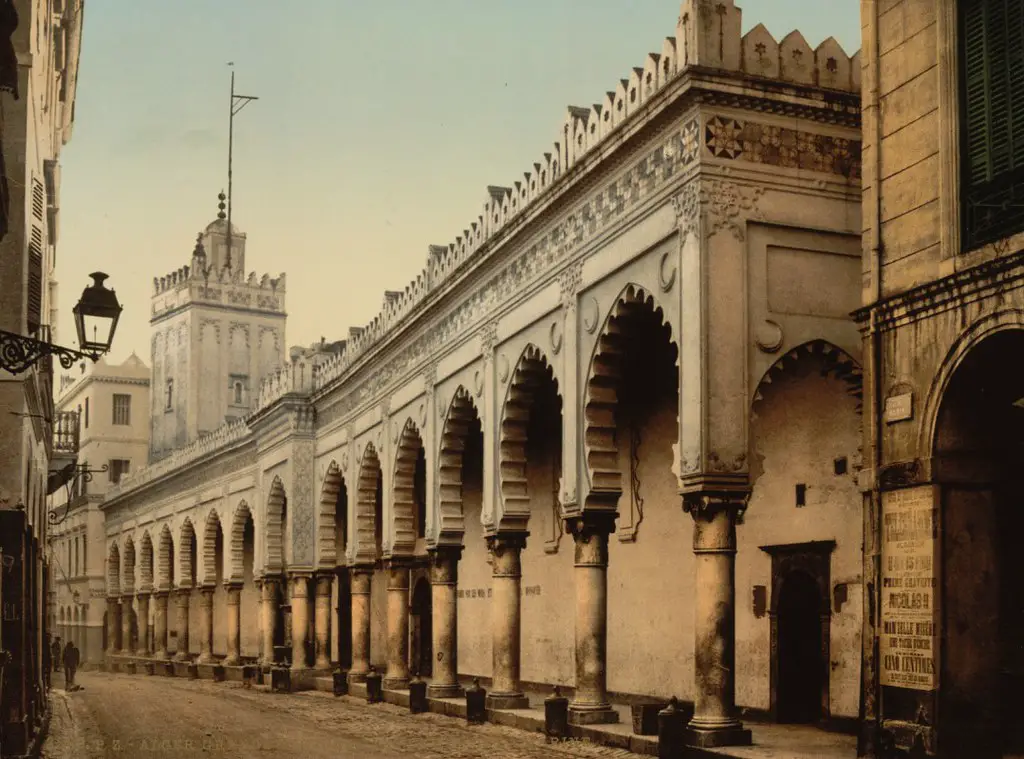
The Great Mosque of Algiers, also known as the Djamaa el Djazaïr, is the largest mosque in Africa and the third-largest in the world.
What to see or do: Visitors can marvel at the mosque’s impressive architecture and intricate designs, including its 265-meter minaret, 33-domed roof, and stunning marble and granite interior.
Don’t miss: Be sure to check out the mosque’s beautiful courtyard, which features a large reflecting pool and gardens, as well as the adjacent Islamic Arts and Civilization museum.
Insider travel tips: – Visitors must dress modestly and remove their shoes before entering the mosque.
2. Kasbah of Algiers
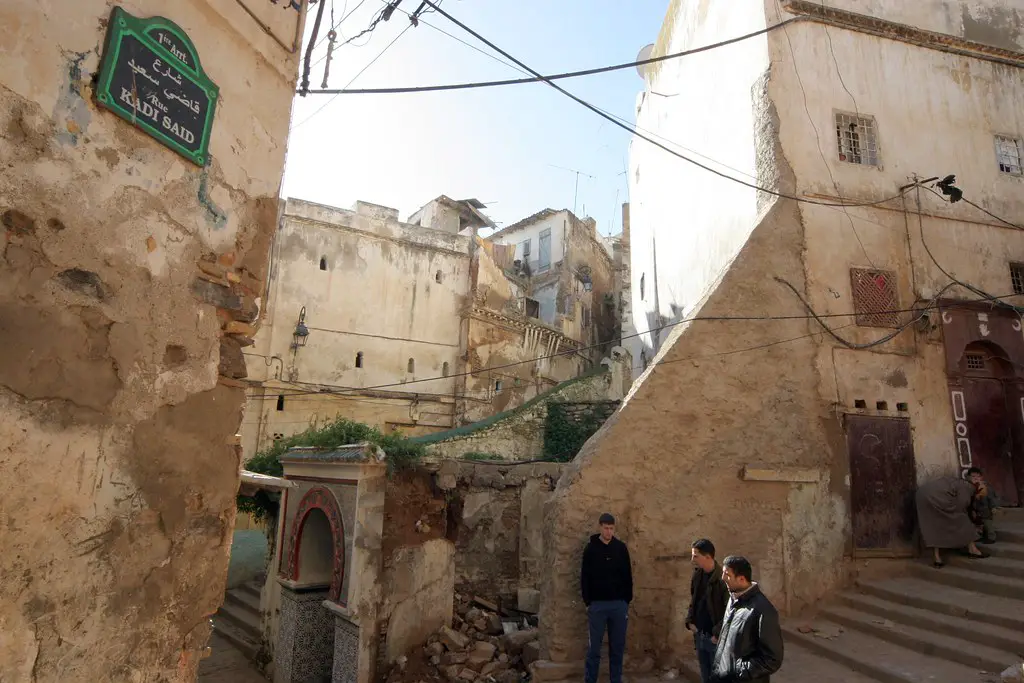
A UNESCO World Heritage site located in Algiers, Algeria, comprising of a maze-like network of narrow streets lined with traditional houses.
What to see or do: Explore the labyrinthine alleys, admire the architecture of the ancient houses, and soak in the rich cultural heritage of the city.
Don’t miss: The Ottoman-era palaces and mosques, including the iconic Ketchaoua Mosque, which has now been converted into a museum.
Insider travel tips: Wear comfortable walking shoes as the hilly and irregular terrain can be challenging to navigate. Visit early in the morning or late in the evening to avoid the crowds.
Take a guided tour to get an in-depth understanding of the history and significance of the Kasbah.
3. Tassili n’Ajjer National Park
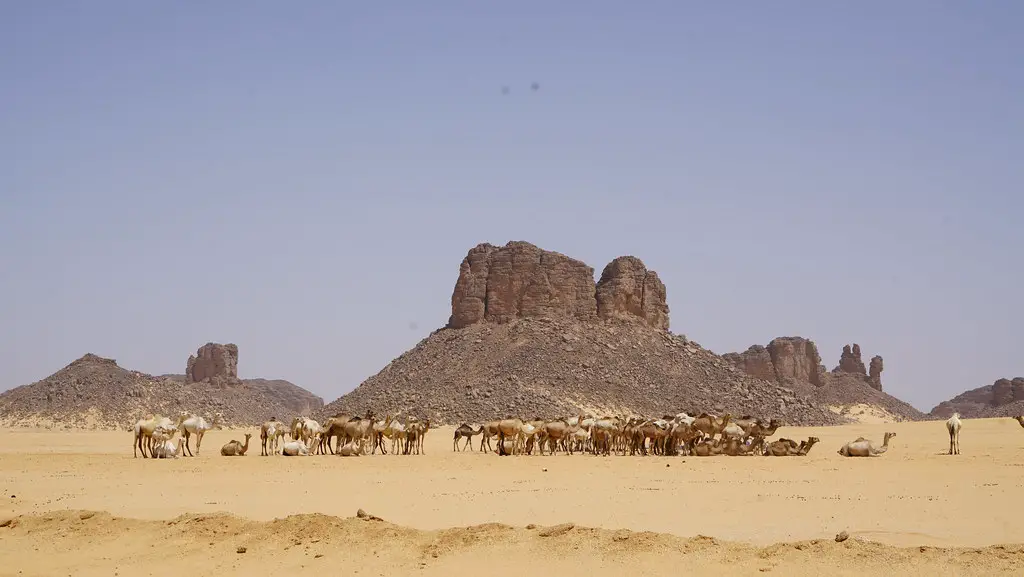
Tassili n’Ajjer National Park is a vast desert area located in the southeast of Algeria, known for its stunning rock formations, canyons, and prehistoric cave art.
What to see or do: Explore the breathtaking landscapes, vast stretches of surreal rock formations, and ancient rock paintings. Visitors can take a guided tour to discover the hidden treasures of the park.
Don’t miss: Don’t miss out on visiting the stunning “La Vallée des Chênes” (Oak Valley) and “Assekrem” peak, which is one of the highest points in the park, offering spectacular views of the surroundings.
Insider travel tips: Be sure to bring plenty of water, sunscreen, and a hat, as the climate in the area can be extremely hot and dry.
It’s also recommended to hire a local guide to ensure a safe and enjoyable experience.
4. Roman Theater of Djémila

The Roman Theater of Djémila is an ancient amphitheater located in the North African country of Algeria.
What to see or do: Visitors can explore the well-preserved ruins of the Roman Theater of Djémila, which was built in the 2nd century AD and could seat up to 3,000 spectators.
The site also includes ancient Roman city ruins with houses, public buildings, and other structures.
Don’t miss: Don’t miss the opportunity to climb to the upper tiers of the theater for panoramic views of the surrounding area. Also, be sure to check out the intricate carvings and artwork on the theater’s facade.
Insider travel tips: Try to visit during the off-season to avoid crowds and to have a more peaceful experience.
Wear comfortable shoes as there is a lot of walking involved, and be sure to bring water and sunscreen as there is little shade on the site.
Additionally, consider hiring a local guide to learn more about the history and significance of the Roman Theater of Djémila.
5. Beni Hammad Fort

A medieval fortified city located in northern Algeria.
What to see or do: Explore the ruins of the ancient city, including the palace of the emir, mosques, houses, and granaries. Admire the intricate carvings and designs on the walls and arches.
Don’t miss: The breathtaking view from the top of the hill overlooking the ruins and the surrounding mountains.
Insider travel tips: Wear comfortable shoes as the terrain can be uneven. Bring sunscreen and water as there is limited shade and the weather can be hot.
It is recommended to visit early in the morning or late in the afternoon to avoid the midday heat.
6. Our Lady of Africa Cathedral
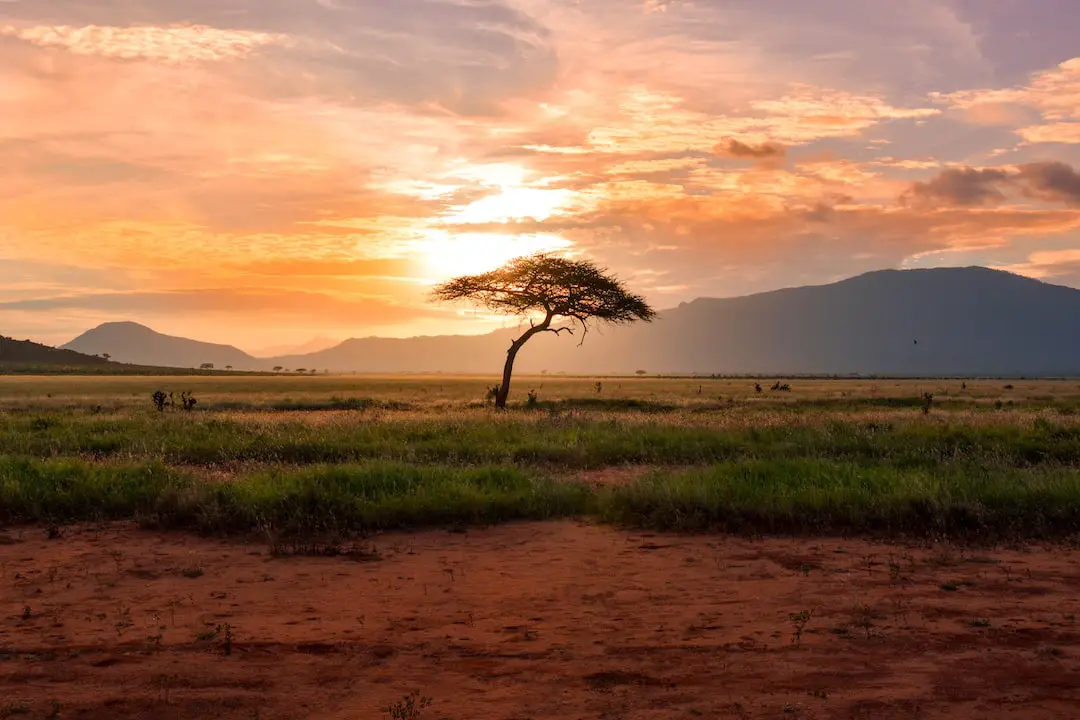
Our Lady of Africa Cathedral is a Catholic church located in Algiers, Algeria.
What to see or do: The cathedral’s architecture is a blend of Gothic and Byzantine styles, with a beautiful rose window and spires that dominate the city’s skyline.
Visitors can attend mass or admire the stunning interior, which features intricate stained glass windows and religious artwork.
Don’t miss: The cathedral’s main attraction is its White Madonna statue, which is believed to have miraculous powers. The statue has been brought from Spain and has become a significant symbol of the cathedral and the city.
Insider travel tips: – Visitors should dress modestly when visiting the cathedral, as it is a religious site.
7. Tipasa archaeological site

A UNESCO World Heritage site located in Algeria, Tipasa is an ancient Roman city that has been well-preserved over the centuries.
What to see or do: Visitors can explore the many ruins located throughout the site, including the impressive amphitheater, the Roman forum, and the various temples and tombs.
The onsite museum is also worth a visit to learn more about the history of the site.
Don’t miss: The stunning views of the Mediterranean Sea from the top of the amphitheater are not to be missed.
Be sure to also take a stroll through the nearby town of Tipasa, which is known for its beautiful beaches and charming streets.
Insider travel tips: Be prepared for a fair amount of walking throughout the site, so comfortable shoes and plenty of water are a must.
Try to visit early in the morning or later in the day to avoid the crowds and heat. Additionally, hiring a local guide can help bring the history of the site to life.
8. El Oued Souf Saharian Museum

The El Oued Souf Saharian Museum is a museum located in the city of El Oued, Algeria, that displays various exhibits and artifacts related to the culture, history, and lifestyle of the Saharan region.
What to see or do: Visitors can explore the various exhibits and displays showcasing the traditional clothing, jewelry, tools, and household items of the various tribes that have inhabited the Sahara over the years.
The museum also provides information on the agriculture and architecture of the region.
Don’t miss: The highlight of the museum is the unique collection of camel saddles, which is considered to be one of the largest in the world.
The saddles on display vary in size and design based on the different tribes and their traditional practices.
Insider travel tips: – The museum is open every day except Mondays, from 9 am to 5 pm.
9. La Grande Poste d’Alger
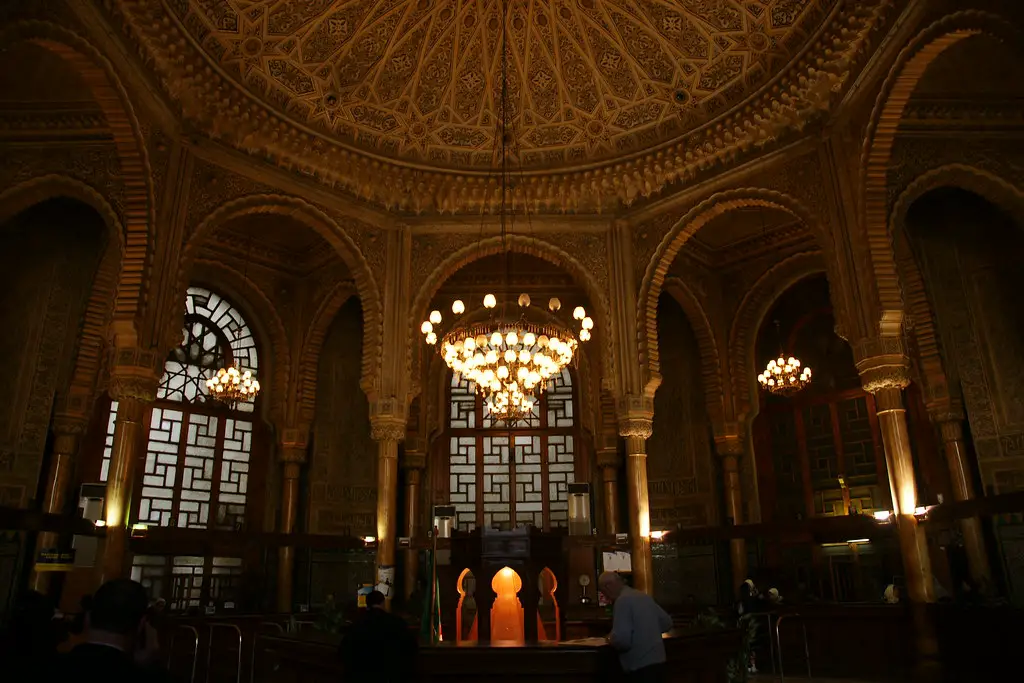
A historic post office located in the center of Algiers, the capital city of Algeria.
What to see or do: Take in the impressive architecture of the building, which features a blend of Moorish and French styles. Admire the intricate details on the facade and ornate interior, including the colorful stained-glass windows and marble floors.
Don’t miss: Visit the rooftop terrace for spectacular views of the city and the Bay of Algiers.
The terrace also features a cafe where you can enjoy a cup of coffee or a light meal while taking in the view.
Insider travel tips: Avoid the crowds by visiting early in the morning or later in the afternoon. Make sure to bring your camera to capture the beautiful architecture and stunning views from the rooftop terrace.
10. Ahmed Zabana National Museum

The Ahmed Zabana National Museum is a historical and cultural museum located in Oran, Algeria. It is named after Ahmed Zabana, a martyr of the Algerian War of Independence.
What to see or do: The museum houses a large collection of artifacts and exhibits focused on Algerian history and culture. Visitors can see everything from traditional clothing and jewelry to weaponry used during the Algerian War of Independence.
One of the most interesting exhibits is a recreation of the historic Battle of Tlemcen.
Don’t miss: Make sure to check out the museum’s beautiful courtyard, which features a stunning fountain and greenery. Also, don’t miss the exhibit dedicated to the life and legacy of Ahmed Zabana.
Insider travel tips: – The museum is closed on Mondays, so plan your visit accordingly.
11. Ketchaoua Mosque
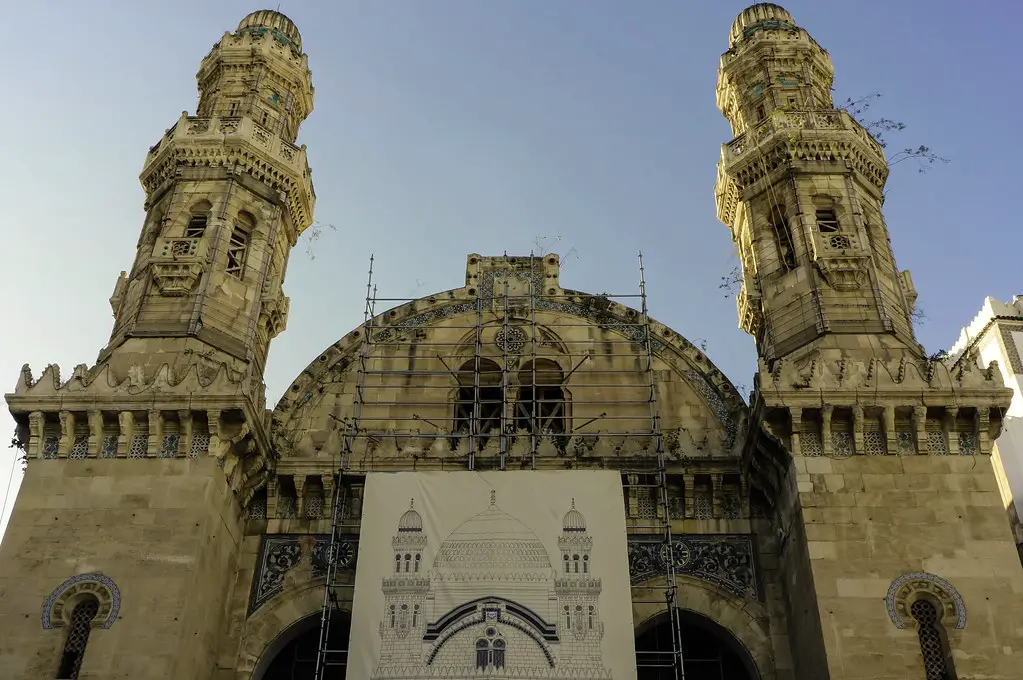
The Ketchaoua Mosque is a historic mosque located in the Casbah of Algiers, the capital city of Algeria.
What to see or do: Visitors can explore the stunning architecture of the mosque, which features a blend of Islamic and European styles.
The mosque boasts beautiful marble columns, intricately designed arches, and magnificent domes, along with a minaret that is visible from many points across the city.
Don’t miss: Make sure to take in the view of Algiers and the Bay of Algiers from the mosque’s rooftop terrace. It offers breathtaking panoramic views of the city.
Insider travel tips: – Visitors should dress modestly and remove their shoes before entering the mosque.
12. Notre Dame d’Afrique
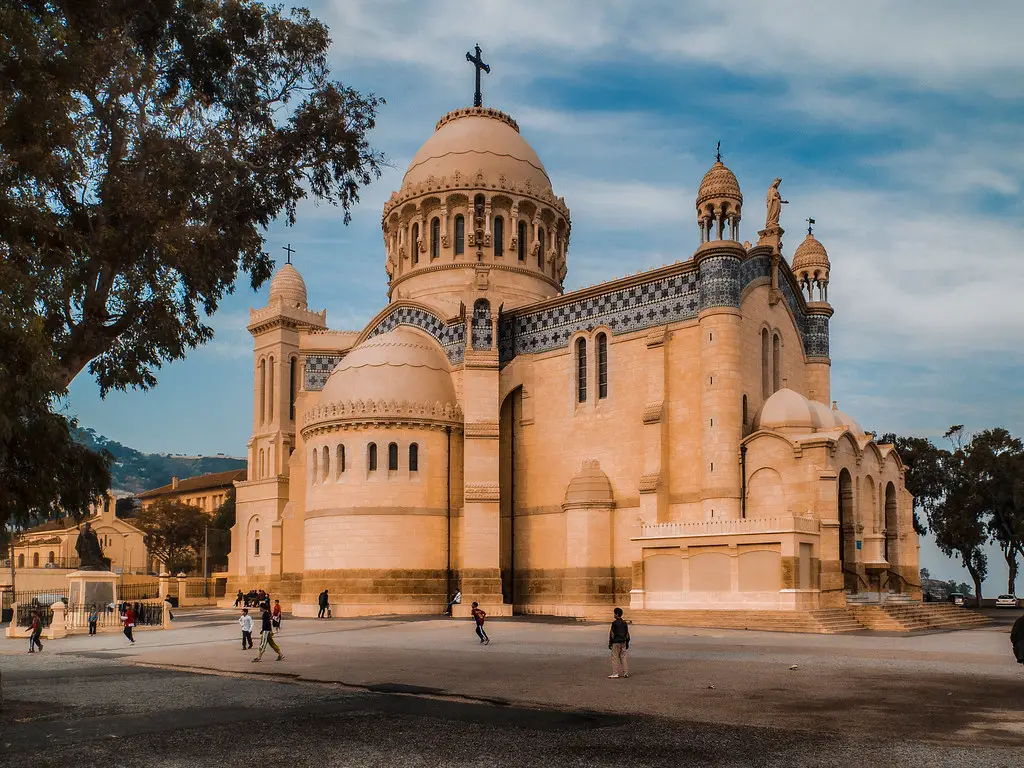
A Catholic basilica located on a hill in Algiers, Algeria.
What to see or do: Admire the stunning white facade with its Byzantine and Romanesque influences. Step inside to see beautiful stained glass windows and intricate mosaics.
Take in the panoramic views of Algiers and the Mediterranean Sea from the basilica’s hilltop location.
Don’t miss: The peaceful gardens located around the basilica, which offer a serene escape from the busy city.
Insider travel tips: Visit early in the morning or late in the afternoon to avoid crowds and capture the best photos with softer lighting.
Wear comfortable shoes as there are uphill paths and stairs to reach the basilica.
13. Ghardaia Old Town
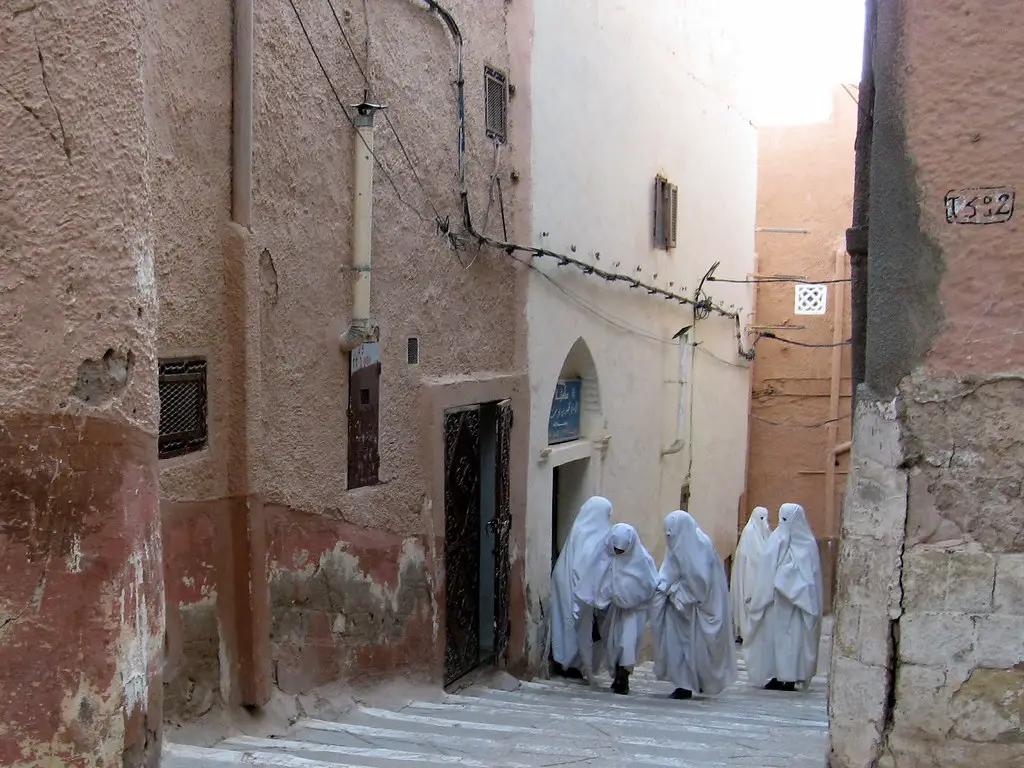
Ghardaia Old Town is a UNESCO World Heritage Site located in the heart of the Sahara Desert in Algeria. It is a beautiful oasis town featuring traditional Islamic North African architecture and culture.
What to see or do: Take a walking tour of the old town and admire the unique and intricate architecture of the buildings, houses, and mosques.
Visit the Qal’a museum, which showcases the region’s history and culture. Attend a local market and listen to live music performances to fully immerse yourself in the culture.
Don’t miss: Be sure to visit the Beni Isguen market, which is only accessible to women dressed in traditional clothing. This market provides a great opportunity to see traditional Algerian culture up close and purchase handmade goods.
Insider travel tips: Try to visit Ghardaia Old Town during the cooler months as temperatures can reach over 100°F during the summer. Also, dress modestly and respectfully when visiting the mosques and other religious sites.
If you’re interested in staying in the old town, consider booking a traditional guesthouse for a more immersive experience.
14. Djemaa el Djedid

A historical mosque located in the heart of the city of Algiers, Algeria.
What to see or do: Explore the beautiful architecture of the mosque and admire the intricate details on the walls and ceilings.
Don’t miss: The stunning view of the city from the top of the minaret.
Insider travel tips: Be sure to dress modestly when visiting the mosque and remove your shoes before entering. Also, visit during non-prayer times to avoid disrupting worshippers.
15. Hippo Regius
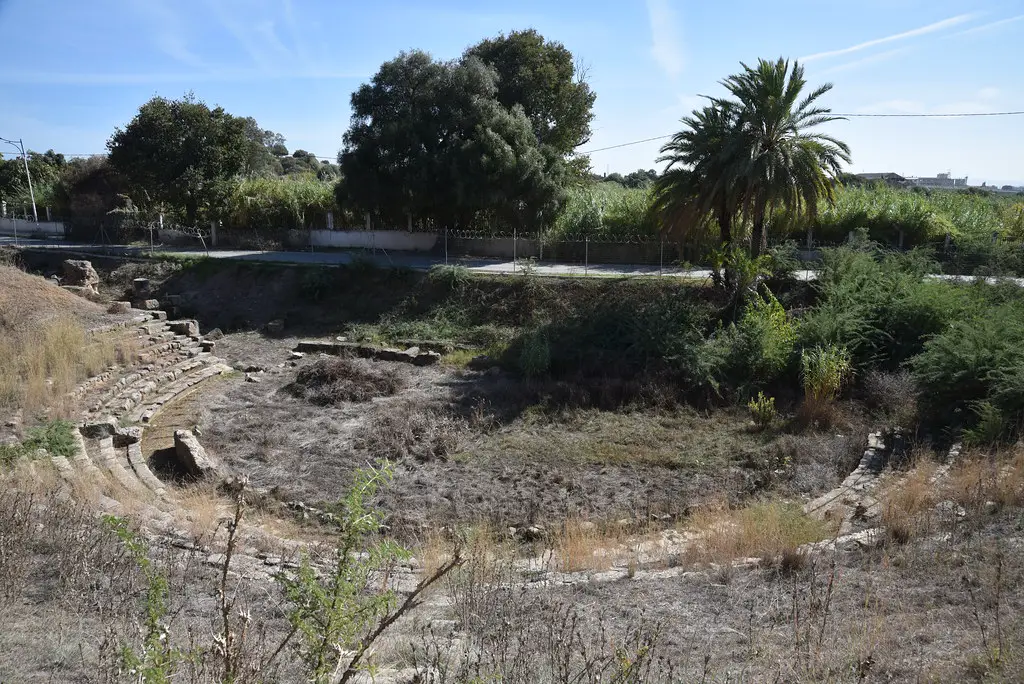
Hippo Regius is an ancient Roman city located in modern-day Annaba, Algeria.
What to see or do: – Visit the Hippo Regius Archaeological Park and see the well-preserved ruins of the ancient city, including a Roman theater and amphitheater.
Don’t miss: – The Basilica of St. Augustine, a church built in the late 19th century that now serves as a pilgrimage site for Catholics.
Insider travel tips: – Visit in the off-season to avoid crowds and enjoy cooler weather.
16. Emir Abdelkader Mosque
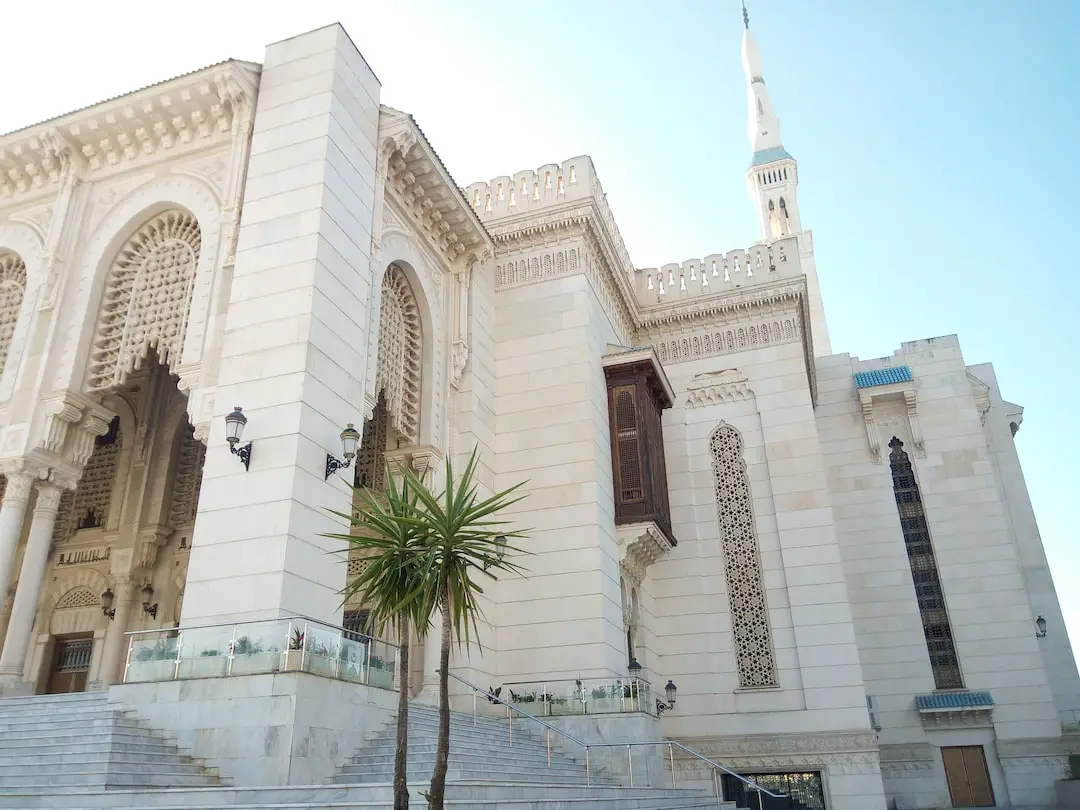
Emir Abdelkader Mosque is a historic mosque located in the city of Constantine, Algeria. Built in the 19th century, it is considered one of the most important religious sites in the country.
What to see or do: Visitors can admire the beautiful architecture of the mosque, which features intricate details and stunning geometric patterns.
The mosque also houses a mausoleum that contains the remains of Emir Abdelkader, a revered Muslim leader and hero of the Algerian resistance against French colonization.
Don’t miss: Make sure to take a moment to appreciate the peaceful atmosphere of the mosque and to reflect on its historical significance.
The views of the city from the mosque are also breathtaking.
Insider travel tips: It is recommended to dress modestly when visiting the mosque, and to remove shoes before entering the prayer areas. Visitors should also prepare to be respectful of local customs and practices.
It is best to visit early in the morning or late in the day to avoid large crowds.
17. Qal’at Bani Hammad
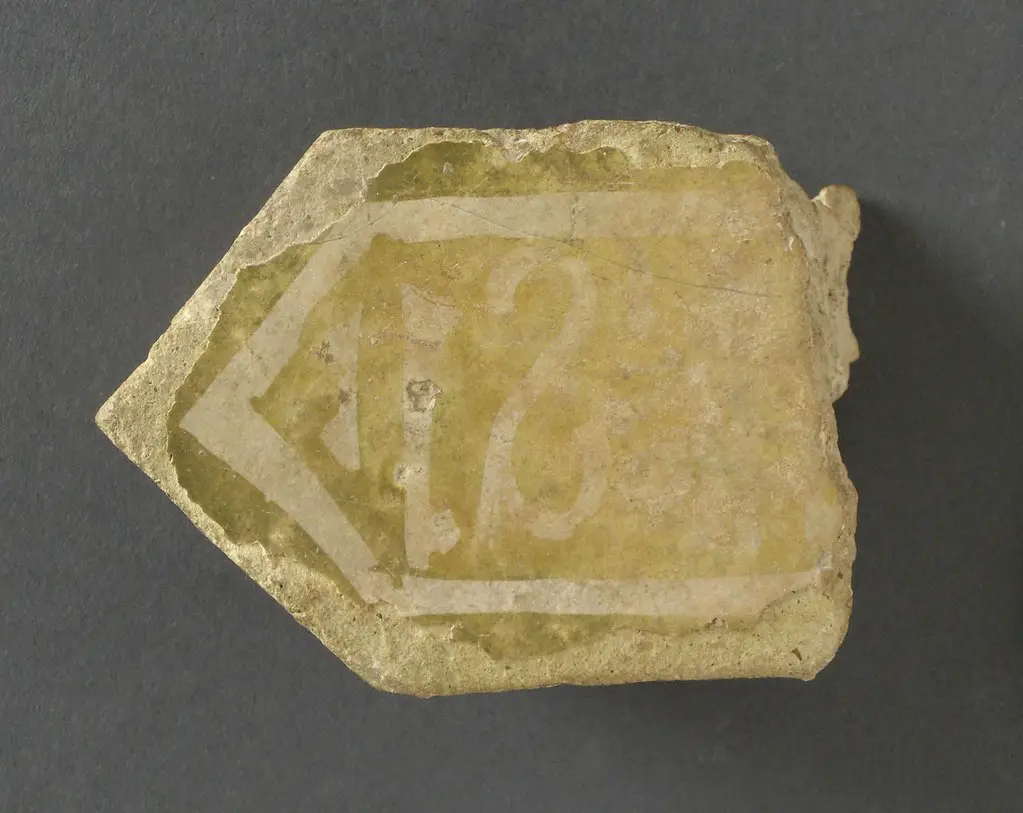
Qal’at Bani Hammad is an ancient fortress located in the Batna Province of Algeria.
What to see or do: The fortress ruins offer a glimpse of the once thriving city that existed in the 11th century. Visitors can explore the remains of the palaces, mosques, and public buildings that were once part of this city.
Don’t miss: The Great Mosque of Qal’at Bani Hammad, which was once one of the largest mosques in North Africa, is a must-see attraction.
Visitors can also check out the historic cisterns and the remains of the royal palace, which was once the seat of power in the city.
Insider travel tips: Make sure to wear comfortable shoes since there is a lot of walking involved to explore the fortress ruins. Also, bring plenty of water and sunscreen since the area can get hot and dry.
Finally, consider hiring a guide to learn more about the history and significance of the fortress.
18. Arab World Institute

A cultural institution located in Paris that showcases the cultural and artistic creations of the Arab world.
What to see or do: Visitors can explore the permanent collection, which includes artifacts such as textiles, ceramics, and jewelry. There are also temporary exhibits featuring contemporary art and photography.
The building itself is also worth seeing, as it was designed by famous architects Jean Nouvel and Architecture Studio.
Don’t miss: The rooftop terrace, which offers stunning views of the Seine River and Notre-Dame Cathedral.
Insider travel tips: If you’re interested in attending a lecture or workshop, check the institute’s schedule online ahead of time. Also, consider visiting on a weekday to avoid crowds.
19. National Museum of Fine Arts

The National Museum of Fine Arts in Buenos Aires is one of the most important artistic centers in Argentina.
What to see or do: The museum houses an extensive collection of Argentine art, including works by renowned artists like Antonio Berni, Xul Solar, and Benito Quinquela Martín.
Visitors can also view collections of international art, with works by Van Gogh, Degas, and Rodin on display.
Don’t miss: One of the highlights of the museum is the impressive collection of Argentine art from the 19th and 20th centuries, including the famous painting “El Grito” by Eduardo Sívori.
Insider travel tips: – The museum is closed on Mondays and opens at noon on Sundays.
20. Anabib Necropolis

Anabib Necropolis is an ancient burial site located in the Libyan desert, dating back to the 2nd century AD.
What to see or do: Visitors can explore the extensive underground tombs, adorned with beautiful frescoes and inscriptions, showcasing the diverse cultural influences of the time.
Don’t miss: The highlight of Anabib Necropolis is undoubtedly the ornate sarcophagi and burial chambers, some of which are decorated with intricate mosaics and stunning sculptures.
Insider travel tips: Make sure to bring a flashlight to fully appreciate the beautiful details within the tombs.
It’s also recommended to hire a local guide to gain a deeper understanding of the history and culture of Anabib Necropolis.
Additionally, be mindful of the desert climate and bring plenty of water and sunscreen.
21. Sanctuary of Martyrs

The Sanctuary of Martyrs is a historical and religious site located in the heart of Beirut, Lebanon. It is a national monument that commemorates the memory of Lebanese nationalists who died during the country’s independence struggle.
What to see or do: Visitors can explore the sanctuary’s stunning architecture, which blends traditional Lebanese and modern elements. The main attraction of the site is the Martyrs’ Monument, a towering structure that dominates the skyline.
There are also beautiful gardens, a museum, and several small chapels to visit.
Don’t miss: The Changing of the Guard ceremony, which takes place at the monument every Sunday at noon. Visitors can witness this somber yet beautiful display as soldiers honor the memory of Lebanon’s fallen patriots.
Insider travel tips: Visit the Sanctuary early in the morning to avoid crowds and get the best views of the monument.
22. El Hedim Square

A bustling public square located in the heart of Meknes, Morocco.
What to see or do: Enjoy the vibrant atmosphere of the square, surrounded by historical buildings, shops, and restaurants. Visit the grand Bab Mansour gate, the largest and most famous gate in Morocco.
Take a stroll through the nearby souks (markets) where you can find a variety of goods including traditional clothing, ceramics, and spices.
Don’t miss: The nightly fountain show, which showcases a display of colorful lights, music, and water.
Insider travel tips: Visit the square in the evening when it is most lively and the fountain show is taking place. Remember to negotiate prices when shopping in the souks, as vendors often inflate the prices for tourists.
23. Roman ruins of Timgad

The Roman ruins of Timgad are an ancient city in Algeria that was founded in the first century AD.
What to see or do: Visitors can explore the well-preserved ruins of the ancient city, which include a triumphal arch, a theater, a library, temples, houses, and a basilica.
Don’t miss: The Arch of Trajan is one of the most impressive ruins at Timgad. It was built in AD 114 to commemorate the emperor’s victory over the Parthians.
Insider travel tips: Visit Timgad early in the morning or late in the afternoon to avoid the heat and crowds.
24. Tlemcen National Park

Tlemcen National Park is a natural reserve located in the northwestern part of Algeria, covering an area of about 9100 hectares.
What to see or do: Tlemcen National Park is known for its natural beauty and diverse range of flora and fauna. The park is home to many species of wildlife, including Barbary macaques and golden jackals.
Visitors can enjoy scenic hiking trails, bird watching, and picnics amidst breathtaking views of the landscape.
Don’t miss: Don’t miss the opportunity to explore the park’s picturesque waterfalls and lakes, also the Tlemcen vineyards offering visitors an exquisite wine tasting experience.
Insider travel tips: Visitors should come prepared with sturdy hiking gear and plenty of water. It is advisable to visit the park between April and June for the best experience with a good weather.
Also, it is recommended to hire a local guide for a better understanding of the park’s rich history and cultural heritage.
25. Tlemcen Great Mosque

The Great Mosque of Tlemcen, also known as the Mosque of Sidi Boumediene, is a historic mosque in Tlemcen, Algeria.
What to see or do: Explore the stunning architecture of the mosque, including the intricately decorated minaret and domed prayer hall. Admire the courtyard’s beautiful ornamental garden and the intricate mosaic patterns on the walls and ceilings.
Don’t miss: Don’t miss the opportunity to witness how the locals pray and worship at the mosque, which is an important religious and cultural site in Algeria.
Insider travel tips: It’s advisable to dress modestly and remove your shoes before entering the mosque. A guided tour is recommended to fully appreciate the historical and cultural significance of the mosque.
Visit during weekdays for a quieter and more peaceful experience.
26. Kasbah of Tlemcen

The Kasbah of Tlemcen is a fortified structure that was built during the Almoravid dynasty and served as a palace for the rulers of the region.
Today, it is a popular tourist attraction and a UNESCO World Heritage Site.
What to see or do: Visitors can explore the various courtyards, gardens, and rooms of the Kasbah, which offer a glimpse into the rich history and cultural heritage of Tlemcen.
The architecture is a blend of Islamic and Andalusian styles, with intricate tilework, sculpted marble, and ornate plaster patterns.
Don’t miss: One of the highlights of the Kasbah is the Andalusian garden, which features a tranquil pool surrounded by citrus trees, flowers, and fountains.
Another must-see attraction is the Mosque of Sidi Boumediene, which is located nearby and is worshipped by many locals.
Insider travel tips: – To fully appreciate the beauty and history of the Kasbah, consider hiring a local guide who can provide detailed cultural and historical insights.
27. Ain Defla Church
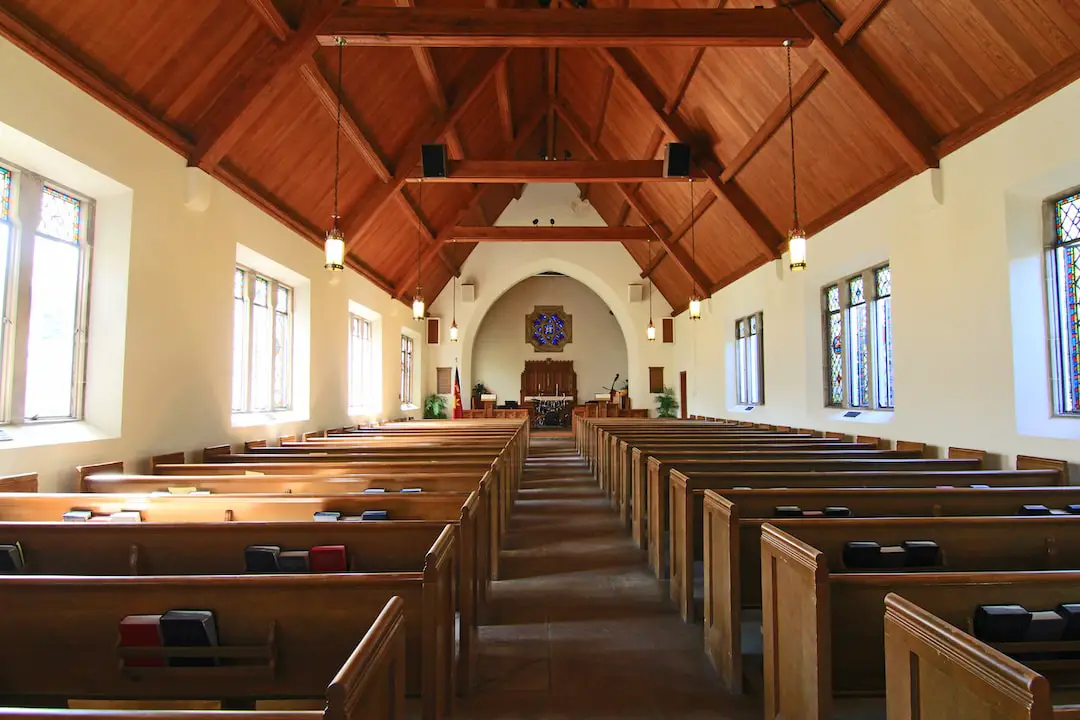
Ain Defla Church is a stunning Roman Catholic church located in Ain Defla, Algeria.
What to see or do: Visitors can admire the church’s beautiful Gothic architecture featuring intricate detailing and pointed arches.
The interiors of the church boast colorful stained-glass windows and a peaceful ambiance, offering a tranquil escape from the hustle and bustle of the city.
Don’t miss: Make sure to check out the bell tower, which stands tall at the entrance of the church. Visitors are also advised to attend a Mass to experience the spiritual atmosphere of the church.
Insider travel tips: If you’re visiting during the summer months, be sure to dress appropriately as temperatures can soar in the small Algerian town.
It’s also best to be respectful of the church’s religious significance by avoiding loud noises and taking off your shoes before entering.
28. Bordj el Kiffan Beach
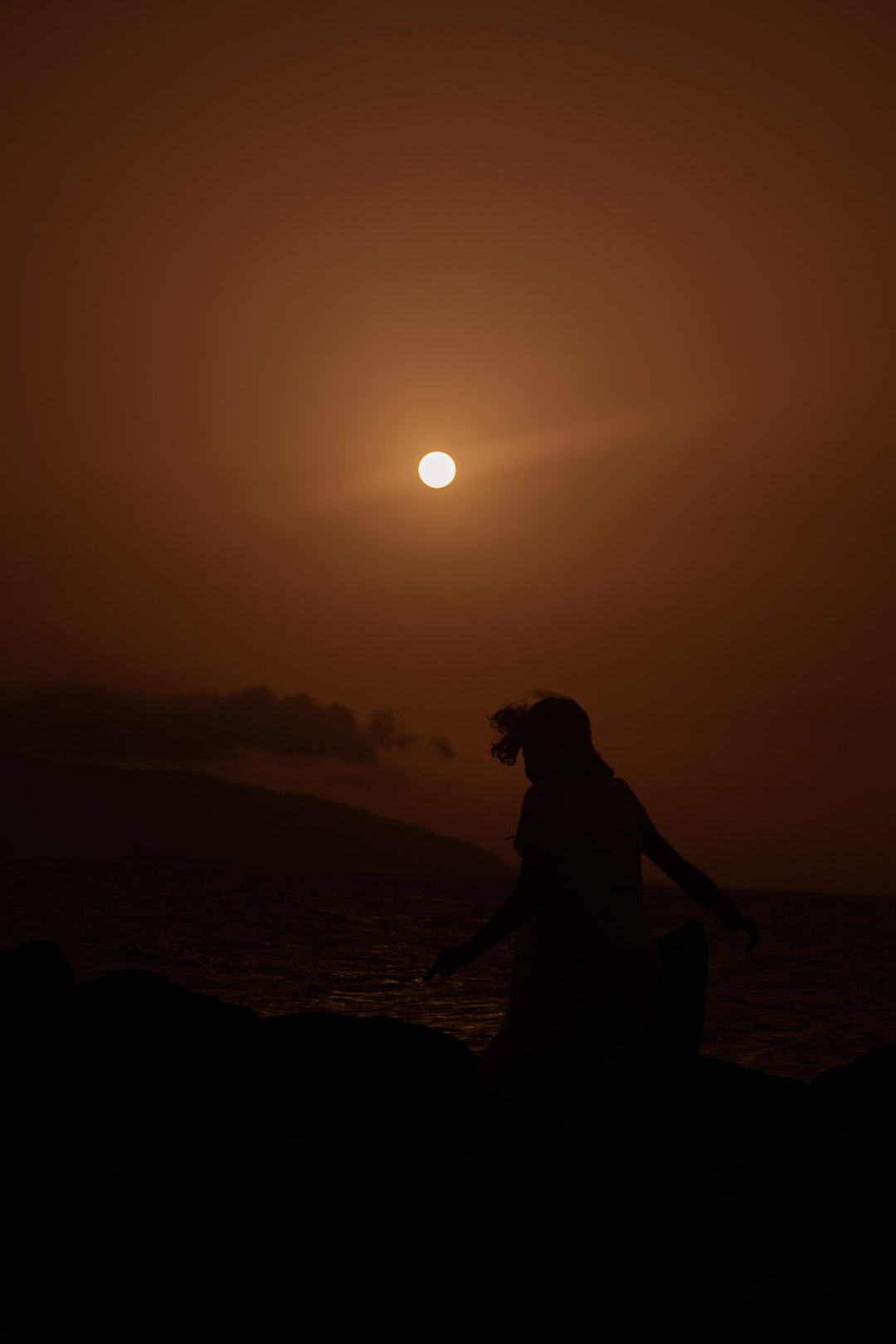
Bordj el Kiffan Beach is a popular beach located in the eastern suburb of Algiers, Algeria.
What to see or do: Visitors can enjoy swimming, sunbathing, and lounging on the sand. The beach also offers various water sports activities including windsurfing, jet skiing, and paddle boating.
Don’t miss: Don’t miss the stunning panoramic views of the Mediterranean Sea from the beach.
Insider travel tips: Try to avoid going on weekends due to heavy crowds. The beach can also get quite windy, so bring appropriate attire and equipment for water sports.
29. Ain Salah Mosque

Ain Salah Mosque is a historic mosque located in the town of Ain Salah in central Algeria. It was built in the 11th century and is considered to be one of the oldest mosques in North Africa.
What to see or do: Visitors can admire the simple yet elegant architecture of the mosque and its intricate decorations. The interior is adorned with colorful tiles and calligraphy.
Don’t miss: Don’t miss the opportunity to see the unique design features of the mosque, such as the horseshoe arches and the ornate entrance.
The nearby market is also worth a visit for its traditional handicrafts and food.
Insider travel tips: It’s important to dress modestly when visiting the mosque and remove shoes before entering.
It’s best to visit during the early morning or late afternoon when the weather is cooler and the lighting is ideal for photography.
30. Great Mosque of Kairouan

The Great Mosque of Kairouan is a UNESCO World Heritage Site located in the city of Kairouan, Tunisia. It is considered one of the most significant Islamic monuments in North Africa and is renowned for its impressive architecture.
What to see or do: The mosque features an imposing hypostyle prayer hall with several aisles and arches, a central courtyard with a beautiful fountain, and a towering minaret that offers stunning panoramic views of the city.
Visitors can also see the intricately decorated prayer niche (mihrab) and the wooden pulpit (minbar).
Don’t miss: Make sure to take a closer look at the details of the architecture, including the intricate geometric patterns and calligraphy on the walls and ceilings.
The serene atmosphere and the sense of history and tradition that emanates from this place make it a must-visit.
Insider travel tips: – It’s important to dress modestly and remove your shoes before entering the mosque.